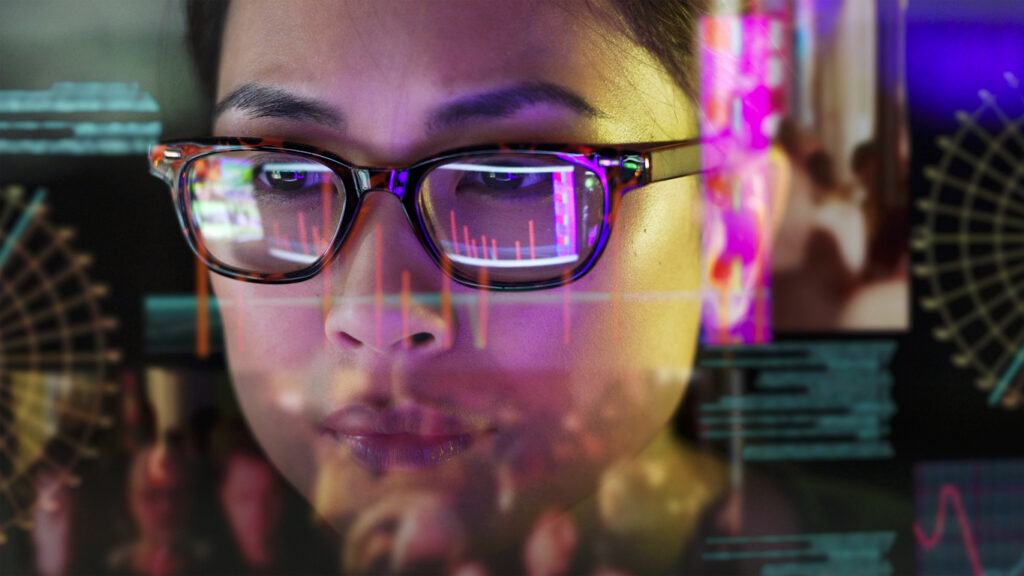In light of the coronavirus pandemic and the impending global economic downturn, many organisations are scrambling to cut costs and generate efficiencies. In times of uncertainty, learning and development is often the area most at risk to cost-cutting measures, and is seen as a luxury that the business can do without.
Putting learner needs and experience at the heart of the design of learning solutions isn’t new, but it can be crucial in times of business disruption.
The post-pandemic world is likely to involve organisations adapting to rapid changes in the business landscape, however, and this will require employees to develop new skills and adopt new ways of working on demand. L&D initiatives could be crucial in helping businesses to be agile and survive in this uncertainty.
A recent Gartner survey revealed that 60% of workforces have had to use new skills in response to the Covid-19 pandemic. So how can L&D leaders both protect investments in learning and development and ensure programmes are cost-effective for the business?
Adapting virtual programmes
In recent years, many L&D teams have prioritised the introduction of digital experiences into their training programmes, and this helped businesses manage the urgent shift to remote working at the start of the pandemic. Gartner research shows that 84% of companies have moved learning to virtual platforms, helping minimise disruption to employee development.
Despite this, there is a lot of work required from L&D leaders to update current programmes and make them fit for purpose on the back of the coronavirus pandemic. These programmes were not designed for the scale of people working remotely, nor did they take into account the dramatic changes in ways of working, and this will need to be addressed if investments are to be protected.
L&D leaders should be looking at how to shift programmes to focus on the skills required for remote working and a hybrid work model. Hybrid work models allow employees to flow through various work sites ranging from remote silo locations, to remote microsites of small populations, to traditional concentrated facilities (e.g. office, factory, retail) Effective use of digital platforms and collaboration tools will be most important, but beyond that, organisations may benefit from skills such as interpersonal communication, teamwork, and mental health awareness, in order to operate effectively during and beyond the pandemic.
Adopting design thinking
In redesigning learning and development programmes, leaders should also be taking the opportunity to tailor learning solutions to the individual needs of employees. Even with inevitable cuts in budgets, L&D teams have more tools at their disposal for understanding skills shortages, whether it’s by capturing and analysing data, or using digital tools to capture real-time feedback from employees.
With this wealth of new information, teams can adopt design thinking, a methodology centered on bringing together cross-functional teams to brainstorm and prototype potential solutions for individual employees. This can help them match the employee’s needs with the right content and learning solutions, creating much needed efficiencies in training programmes at a time when resources are stretched.
Putting learner needs and experience at the heart of the design of learning solutions isn’t new, but it can be crucial in times of business disruption. By directly addressing strategic skills gaps and streamlining training courses, L&D leaders will be in a much stronger position to demonstrate the value of their training programmes against the cost for the business.
Developing manager capability
As the case is made for preserving learning and development budgets, L&D teams should also be reminding senior business leaders and managers about what these programmes mean to them – after all, managers need access to learning opportunities as well. During the biggest global health crisis of our generation, this is likely to include guidance on how to manage staff through times of uncertainty.
Even before the pandemic, factors such as emerging technologies, expectations around corporate social responsibility (CSR) initiatives, and staff cuts were dramatically changing the day-to-day role of the business leader. In fact, in a survey before the pandemic, we found that organisations expect over 40% of leadership roles to be significantly different within the next five years. Covid-19 has accelerated these changes, and managers are under-pressure to adapt to the ‘new normal’.
One way for L&D to support the development of leaders is to introduce structured peer coaching and consulting into the organisation, enabling leaders to draw on each other’s experience and expertise to help navigate difficult challenges. L&D can also source feedback from direct reports on what behaviours or skills they urgently need their managers to demonstrate to support them in achieving team goals.
As well as getting managers to improve their skills and actively think about how they can pass on their experiences, this approach demonstrates the value of learning and development initiatives to the most senior figures in the organisation. It will spark a new appreciation for learning and development during a time of general confusion and anxiety.
Development for the future
We are already seeing examples of Covid-19 forcing permanent change in business operations. In one of our more recent surveys, we found that half of organisations plan to allow employees to work remotely full-time after the pandemic, and 43% will grant employees flexible working patterns. Twitter led this trend by announcing it would allow employees to work from home forever.
The qualities organisations need to survive massive change events – agility, adaptability and resilience – are the products of effective L&D strategies. In many ways, the pandemic has just accelerated trends that were already taking place, and businesses therefore need to be even more invested in employee development to keep up.
Now is the time for L&D leaders to adapt and demonstrate the value of learning and development programmes.
Interested in this topic? Read Viva la revolution! Why L&D must fight for its future in this time of change and uncertainty.
In light of the coronavirus pandemic and the impending global economic downturn, many organisations are scrambling to cut costs and generate efficiencies. In times of uncertainty, learning and development is often the area most at risk to cost-cutting measures, and is seen as a luxury that the business can do without.
Putting learner needs and experience at the heart of the design of learning solutions isn’t new, but it can be crucial in times of business disruption.
The post-pandemic world is likely to involve organisations adapting to rapid changes in the business landscape, however, and this will require employees to develop new skills and adopt new ways of working on demand. L&D initiatives could be crucial in helping businesses to be agile and survive in this uncertainty.
A recent Gartner survey revealed that 60% of workforces have had to use new skills in response to the Covid-19 pandemic. So how can L&D leaders both protect investments in learning and development and ensure programmes are cost-effective for the business?
Adapting virtual programmes
In recent years, many L&D teams have prioritised the introduction of digital experiences into their training programmes, and this helped businesses manage the urgent shift to remote working at the start of the pandemic. Gartner research shows that 84% of companies have moved learning to virtual platforms, helping minimise disruption to employee development.
Despite this, there is a lot of work required from L&D leaders to update current programmes and make them fit for purpose on the back of the coronavirus pandemic. These programmes were not designed for the scale of people working remotely, nor did they take into account the dramatic changes in ways of working, and this will need to be addressed if investments are to be protected.
L&D leaders should be looking at how to shift programmes to focus on the skills required for remote working and a hybrid work model. Hybrid work models allow employees to flow through various work sites ranging from remote silo locations, to remote microsites of small populations, to traditional concentrated facilities (e.g. office, factory, retail) Effective use of digital platforms and collaboration tools will be most important, but beyond that, organisations may benefit from skills such as interpersonal communication, teamwork, and mental health awareness, in order to operate effectively during and beyond the pandemic.
Adopting design thinking
In redesigning learning and development programmes, leaders should also be taking the opportunity to tailor learning solutions to the individual needs of employees. Even with inevitable cuts in budgets, L&D teams have more tools at their disposal for understanding skills shortages, whether it’s by capturing and analysing data, or using digital tools to capture real-time feedback from employees.
With this wealth of new information, teams can adopt design thinking, a methodology centered on bringing together cross-functional teams to brainstorm and prototype potential solutions for individual employees. This can help them match the employee’s needs with the right content and learning solutions, creating much needed efficiencies in training programmes at a time when resources are stretched.
Putting learner needs and experience at the heart of the design of learning solutions isn’t new, but it can be crucial in times of business disruption. By directly addressing strategic skills gaps and streamlining training courses, L&D leaders will be in a much stronger position to demonstrate the value of their training programmes against the cost for the business.
Developing manager capability
As the case is made for preserving learning and development budgets, L&D teams should also be reminding senior business leaders and managers about what these programmes mean to them – after all, managers need access to learning opportunities as well. During the biggest global health crisis of our generation, this is likely to include guidance on how to manage staff through times of uncertainty.
Even before the pandemic, factors such as emerging technologies, expectations around corporate social responsibility (CSR) initiatives, and staff cuts were dramatically changing the day-to-day role of the business leader. In fact, in a survey before the pandemic, we found that organisations expect over 40% of leadership roles to be significantly different within the next five years. Covid-19 has accelerated these changes, and managers are under-pressure to adapt to the ‘new normal’.
One way for L&D to support the development of leaders is to introduce structured peer coaching and consulting into the organisation, enabling leaders to draw on each other’s experience and expertise to help navigate difficult challenges. L&D can also source feedback from direct reports on what behaviours or skills they urgently need their managers to demonstrate to support them in achieving team goals.
As well as getting managers to improve their skills and actively think about how they can pass on their experiences, this approach demonstrates the value of learning and development initiatives to the most senior figures in the organisation. It will spark a new appreciation for learning and development during a time of general confusion and anxiety.
Development for the future
We are already seeing examples of Covid-19 forcing permanent change in business operations. In one of our more recent surveys, we found that half of organisations plan to allow employees to work remotely full-time after the pandemic, and 43% will grant employees flexible working patterns. Twitter led this trend by announcing it would allow employees to work from home forever.
The qualities organisations need to survive massive change events – agility, adaptability and resilience – are the products of effective L&D strategies. In many ways, the pandemic has just accelerated trends that were already taking place, and businesses therefore need to be even more invested in employee development to keep up.
Now is the time for L&D leaders to adapt and demonstrate the value of learning and development programmes.
Interested in this topic? Read Viva la revolution! Why L&D must fight for its future in this time of change and uncertainty.






